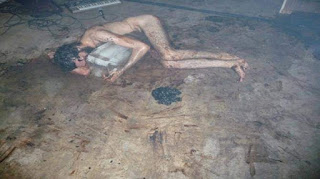The Dunfanaghy Workhouse, Co. Donegal
The Dunfanaghy Poor Law Union was declared on the 20th July 1841. It covered an area of 200 square miles and was overseen by an elected Board of Guardians.
They represented Ards, Creenasmear, Creeslough, Crossroads, Doecastle, Dunfanaghy, Dunlewey, Gortahork, Magheraclogher and Meenaclady. The population within the union at the time the 1831 census was taken was 15,793.
The new workhouse was built circa 1843 and could accommodate 300 inmates. It opened in June of 1845 at the beginning of the Famine. The workhouse occupied six acres south west of Dunfanaghy; which was purchased in 1842 from Alexander Stewart. The building cost £4,350 plus £855 for fixtures and fittings. A loan was taken from the Poor Law Commissioners, which was then repaid by the local poor rates.
During the great famine of 1845-9, many workhouses were full to overflowing and set up soup kitchens to provide food for those outside. The Workhouse closed in 1917 and the inmates moved to the Workhouses in Milford and Letterkenny.
The Paupers Graveyard (sometimes referred to as the Famine Graveyard) is located near the village of Dunfanaghy. Buried within are the remains of victims of the Irish Famine, along with Scottish fishermen who died when their boats wrecked off the coast. Their only memorial is a simple bog-wood cross.
Note: Correction to Workhouse photo, the original photo I had published was of the Milford Workhouse. Thanks to Moses Alcorn and the https://dunfanaghyworkhouse.com/ for pointing out my error.













Comments
Post a Comment